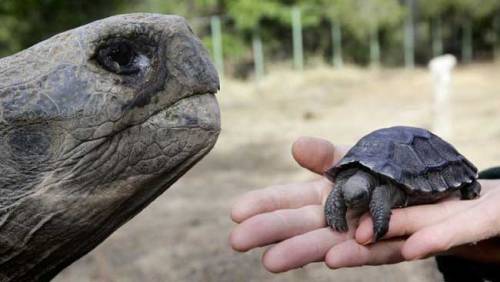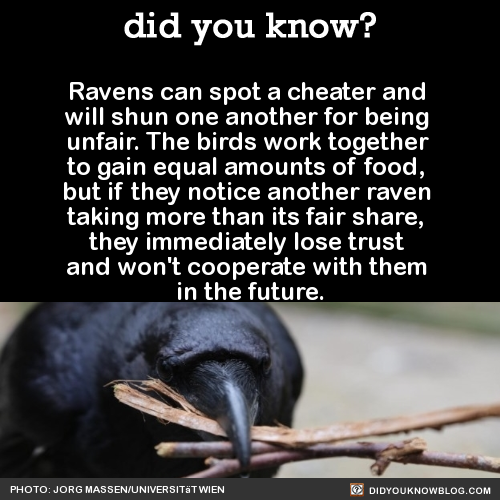In The Common Sense Department: From The Where In Oslo Website.

In the Common Sense department: from the Where In Oslo website.
More Posts from Dotmpotter and Others
Making an impact
ESA - Clean Space Programme logo. 25 September 2015 When a rocket is launched into space it crosses all layers of the atmosphere and interacts with them. How much impact does a launch have on the atmosphere and can we quantify the effect in such a way that we can take mitigation measures? These are only a few of the questions raised by the Clean Space AtILa (Atmospheric Impact of Launchers) project. Neil Murray explains: “It is difficult to use computer modelling to precisely monitor what happens when a rocket is launched as the size of the plume is far smaller than the scale of the climate models that we use to model the atmosphere”.
Picture perfect liftoff
Therefore two strategies were worked out to model the impact, one started from the size of the plume and this was allowed to develop over time and space to the size of the climate model and used as the boundary conditions of the climate model. Another strategy started from the size of the larger model and introduced sub-grid models which modelled the plume within the climate model grids. Both models gave surprisingly similar results. So far it has been thought that chlorine, which is converted from the oxidizer (ammonia perchlorate) in the solid booster fuel mixture, has had the main effect on ozone depletion in the immediate area where the plume is emitted.
Computations conducted at ONERA using the CEDRE code
The latest studies have shown that alumina particles, i.e., oxidised aluminium, which is also present in the solid rocket fuel, may also have a significant ozone depletion effect depending on the particle size. “If the particles are on the micrometer scale they would quickly fall out of the sky and have little impact on the atmosphere. However, the smaller the particles, the higher their combined surface area and the longer they remain suspended in the air, which means that their potential catalytic effect in ozone reduction could also be much higher.” Therefore it is imperative that quantitative data is collected to be able to accurately measure and predict the impact by mathematical models.
Computations conducted at ONERA using the CEDRE code
The first step towards quantitative data is the kick-off of an activity organised in cooperation with DLR whereby a solid rocket motor model in a wind tunnel will be used to simulate the evolution of particles in a representative rocket chamber and to then interpolate this to the conditions at launch. From these measurements accurate models will be developed for predicting the development of alumina particles under real launch conditions. So why not just use real launch data? “It is not that easy to make these measurements during a real launch and so far no data has been collected for European launchers. Up to now we have mainly been relying on data measured by NASA during launches in the 1990s, however, the representativeness of this data with respect to European launchers is questionable. This ultimately leaves us with the task of somehow collecting such flight data and it is something that we are discussing at length.“
Ariane 5 ECA V184 climbout
"Even when we are able to make real-time measurements during a launch it still is a large task to interpret this data correctly and extrapolate this to all launches, as daily changes in the atmosphere and the time of the launch are just a few parameters that severely influence the effect. Luckily we are working with some of Europe’s experts in climatology!” The AtILa project aims to understand the impact of launching its rockets into space by modelling the rocket plumes from their origin in the rocket chamber up to their impact on a global scale using climate models. This is one of the projects that ESA carries out under the Clean Space initiative which has carried out life cycle assessments for the space industry in order to monitor the effect of each space project on the environment. Implementing eco-design strategies into every phase of a space project is the ultimate aim of this initiative. ESA links: Life cycle assessment training at ESA: http://www.esa.int/Our_Activities/Space_Engineering_Technology/Clean_Space/Life_Cycle_Assessment_training_at_ESA Virtual rocket launches will probe atmospheric effects: http://www.esa.int/Our_Activities/Space_Engineering_Technology/Clean_Space/Virtual_rocket_launches_will_probe_atmospheric_effects Considering hydrazine-free satellite propulsion: http://www.esa.int/Our_Activities/Space_Engineering_Technology/Clean_Space/Considering_hydrazine-free_satellite_propulsion ‘Green’ satellite fuel designed to make space safer: http://www.esa.int/Our_Activities/Space_Engineering_Technology/Green_satellite_fuel_designed_to_make_space_safer About Clean Space: What is Clean Space?: http://www.esa.int/Our_Activities/Space_Engineering_Technology/Clean_Space/What_is_Clean_Space Why is it needed?: http://www.esa.int/Our_Activities/Space_Engineering_Technology/Clean_Space/Why_is_it_needed What are its objectives?: http://www.esa.int/Our_Activities/Space_Engineering_Technology/Clean_Space/What_are_its_objectives Images, Text, Credits: ESA/CNES/ARIANESPACE/Photo Optique Vidéo CSG/Service POV du CSG. Best regards, Orbiter.ch Full article

Could Europe Be Powered by African Solar Energy?
For a long time, people looking for big fixes to climate change have been talking about building huge solar installations in North Africa, which gets a lot more sun than most of the places where solar power is big — Germany, for example. But now, it looks as if someone finally is doing it.
Next month in Ouarzazate, Morocco, the first portion of what eventually will be the world’s biggest concentrated solar power plant – called Noor I – is set to go online, according to the Guardian, a British newspaper.
Eventually, when the entire $10 billion complex, which is being financed with assistance from the World Bank and European Union, is completed in 2020, it will generate 580 megawatts of electricity, enough to provide a big portion of Morocco’s energy needs while still leaving plenty of juice for export. The complex could prevent 700,000 tons of carbon dioxide from being spewed into the atmosphere each year.
The plant uses an ingenious technology for getting the most out of sunlight. A huge array of 500,000 crescent-shaped mirrors focus sunlight and transmit it to a single point on a tower. (The mirrors actually have tiny computers in them, which adjust the angle throughout the day to gather the most energy.)
The plant could turn Morocco, which depends upon fossil fuel imports to fill 94 percent of its energy needs, into a major producer of electricity for export. Find out how by clicking here.

Baby Tortoises Show Up In The Galapagos For The First Time In Over A Century
There hadn’t been one single baby tortoise sighting in more than a century on the Galapagos Island of Pinzon, until a small group of the tiny, shelled youngsters were spotted this year.
The recent births are helping to pull the critically endangered animals back from the brink of extinction after they were nearly laid to waste as a result of human activity.
This is huge news for a species that has been struggling to survive for a century, relying on humans raising young tortoises bred in captivity until they are large enough to not fall prey to rats and predators.

Now that is pure adaptation!
As the days get darker and colder in much of the northern hemisphere, it’s easy to indulge in gloom. For the next few months, you’ll be shivering. You’ll be battling foul weather. Thanks to daylight saving time there will be no chance to see the sun after work.
The gloom leads to a common question: What can I do to cope with the dark and cold?
If you truly want to be happy during winter, though, this is the wrong approach to the season. Changing your mindset can do more than distracting yourself from the weather.
At first, she was asking “Why aren’t people here more depressed?” and if there were lessons that could be taken elsewhere. But once she was there, “I sort of realized that that was the wrong question to be asking,” she says. When she asked people “Why don’t you have seasonal depression?” the answer was “Why would we?”
It turns out that in northern Norway, “people view winter as something to be enjoyed, not something to be endured,” says Leibowitz, and that makes all the difference.
Lessons From The Far North
To be sure, there are some aspects of the near-polar culture that might be hard to emulate elsewhere. Small Norwegian communities are tightly knit, and strong social ties increase well-being everywhere. That said, there are lessons that can help anyone think differently about cold weather.










Watch: A haircut may not solve homelessness — but it can make all the difference for these women.
Follow @stylemic
Maps like these allow us to see the city in a new light – not just as a massive consumer of energy, but also as a potential powerhouse.
Dr Anne Maassan on the solar potential of cities. (via thisbigcity)

Earth Could Lose a Third of Its Topsoil
You might think that dirt doesn’t matter that much — after all there seems to be so much of it all over the planet.
But researchers warn that the world’s precious supply of topsoil — which we need to grow food crops, absorb excess carbon and supply us with new antibiotics — is being lost faster than it can be replenished through natural processes. And the decreasing supply of soil could have a catastrophic effect on agriculture and the world supply of food.
The UN, which designated 2015 as the International Year of Soils, warns that 33 percent of the planet’s soil resources are being degraded due to erosion, pollution, acidification and nutrient depletion — destructive processes that are caused by bad land management. And unless new approaches are adopted, the amount of productive farmland on Earth per person will only amount to one-fourth of the amount available in 1960.
In December, the UN is set to release a report on the state of the world’s soil, and it’s likely to present an even more grim picture, according to a preview in New Scientist. We’re losing soil at the rate of 30 soccer fields per minute, and if we don’t slow the decline, the planet’s entire supply of soil for farming could be gone by 2075.
Facebook UK made £105M in 2014, paid £35M in bonuses, and will pay £4,327 in tax

Which is a notable improvement on its tax bill for 2013, which was £0 on earnings of £223m.
The company says it made an accounting loss of £28.5m in the UK for 2014. Facebook says that it “compliant with UK tax law” and adds that its employees usually choose to pay tax on their income rather than availing themselves of the kinds of tax dodges Facebook itself uses. Meanwhile, UK-based companies pay tax, as do their employees, meaning they have less income from which to return dividends to their investors, making UK-based business less profitable and less attractive.
The UK Tory chancellor, George Osborne, has announced swingeing cuts to tax credits for the UK’s working poor, who are at record levels, with many children living in food poverty, because the country allegedly can’t afford to top up the accounts of working people who are literally starving.
George Osborne has repeatedly cut corporate tax rates.
Read the rest
Migrant women hired to make $70 "This is what a feminist looks like" t-shirts are paid $1/hour and sleep in dormitories with 16 women in a single room.

If it would take a woman worker in the factory two weeks of pay to buy one shirt, what’s feminist about that?
Is it important to know the real story behind our clothes? Read the full story here

In an experiment, two ravens had to simultaneously pull the two ends of one rope to slide a platform with two pieces of cheese into reach. If only one of them pulled, the rope would slip through the loops, leaving them with no cheese. Without any training they solved the task and cooperated successfully.

However, when one of the two birds cheated and stole the reward of its companion, the victims of such cheats immediately noticed and started defecting in further trials with the same individual.

“Such a sophisticated way of keeping your partner in check has previously only been shown in humans and chimpanzees, and is a complete novelty among birds.”

Source
-
 chistl liked this · 8 years ago
chistl liked this · 8 years ago -
 swordandstars reblogged this · 9 years ago
swordandstars reblogged this · 9 years ago -
 clickoliver reblogged this · 9 years ago
clickoliver reblogged this · 9 years ago -
 shipperofeverything reblogged this · 9 years ago
shipperofeverything reblogged this · 9 years ago -
 trashgoblinbrain reblogged this · 9 years ago
trashgoblinbrain reblogged this · 9 years ago -
 rustedbrandy-blog reblogged this · 9 years ago
rustedbrandy-blog reblogged this · 9 years ago -
 dreamers-queen reblogged this · 9 years ago
dreamers-queen reblogged this · 9 years ago -
 oykevalt-blog liked this · 9 years ago
oykevalt-blog liked this · 9 years ago -
 takemehometo-themountain liked this · 9 years ago
takemehometo-themountain liked this · 9 years ago -
 gettothedancing reblogged this · 9 years ago
gettothedancing reblogged this · 9 years ago -
 tadpal liked this · 9 years ago
tadpal liked this · 9 years ago -
 pink-kitty-kela liked this · 9 years ago
pink-kitty-kela liked this · 9 years ago -
 pellifeathers reblogged this · 9 years ago
pellifeathers reblogged this · 9 years ago -
 signedtheghost reblogged this · 9 years ago
signedtheghost reblogged this · 9 years ago -
 signedtheghost liked this · 9 years ago
signedtheghost liked this · 9 years ago -
 tehbloodspessangel liked this · 9 years ago
tehbloodspessangel liked this · 9 years ago -
 dorks-infiction liked this · 9 years ago
dorks-infiction liked this · 9 years ago -
 wellbehavedwomendomakehistory reblogged this · 9 years ago
wellbehavedwomendomakehistory reblogged this · 9 years ago -
 theanalyzersfanfics reblogged this · 9 years ago
theanalyzersfanfics reblogged this · 9 years ago -
 lonerofthepack reblogged this · 9 years ago
lonerofthepack reblogged this · 9 years ago -
 a-november-blue liked this · 9 years ago
a-november-blue liked this · 9 years ago -
 jenthefangirl reblogged this · 9 years ago
jenthefangirl reblogged this · 9 years ago -
 babylips24 liked this · 9 years ago
babylips24 liked this · 9 years ago -
 sexdrugs-anddisappointment reblogged this · 9 years ago
sexdrugs-anddisappointment reblogged this · 9 years ago -
 fashion-fades-styyle-remains reblogged this · 9 years ago
fashion-fades-styyle-remains reblogged this · 9 years ago -
 pure-egg liked this · 9 years ago
pure-egg liked this · 9 years ago -
 dean-wetting-his-panties liked this · 9 years ago
dean-wetting-his-panties liked this · 9 years ago -
 hushicho reblogged this · 9 years ago
hushicho reblogged this · 9 years ago -
 hushicho liked this · 9 years ago
hushicho liked this · 9 years ago -
 springtime4pfowolf reblogged this · 9 years ago
springtime4pfowolf reblogged this · 9 years ago -
 ajora reblogged this · 9 years ago
ajora reblogged this · 9 years ago -
 aventure-kf liked this · 9 years ago
aventure-kf liked this · 9 years ago -
 norwayathome-blog liked this · 9 years ago
norwayathome-blog liked this · 9 years ago -
 shipperofeverything reblogged this · 9 years ago
shipperofeverything reblogged this · 9 years ago -
 rebellehead reblogged this · 9 years ago
rebellehead reblogged this · 9 years ago -
 ifeverythingisbeautiful reblogged this · 9 years ago
ifeverythingisbeautiful reblogged this · 9 years ago -
 arosono reblogged this · 9 years ago
arosono reblogged this · 9 years ago -
 grumpyweaver liked this · 9 years ago
grumpyweaver liked this · 9 years ago -
 magnificentmoose liked this · 9 years ago
magnificentmoose liked this · 9 years ago